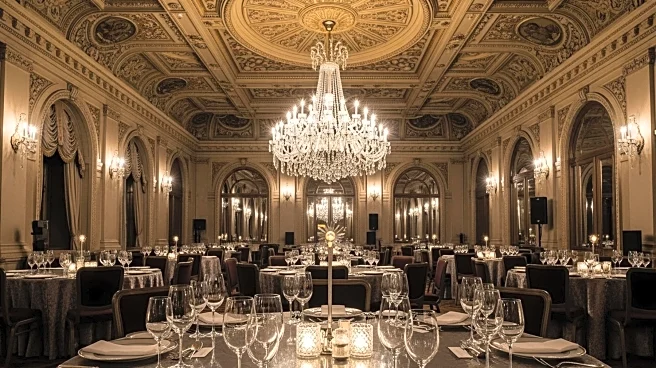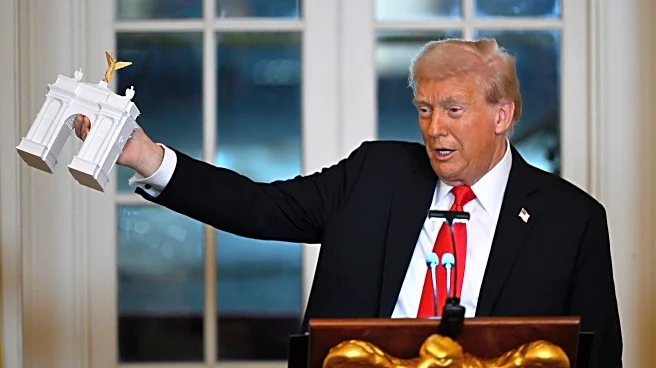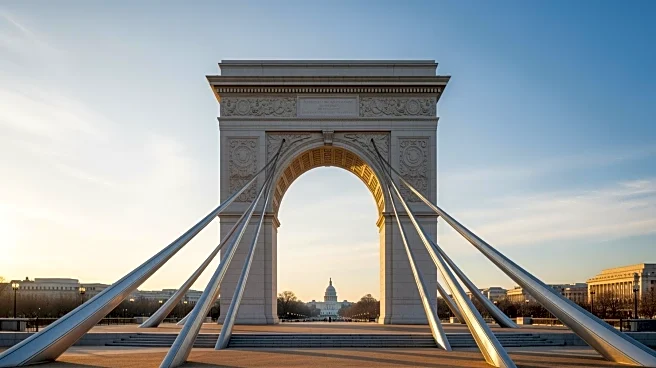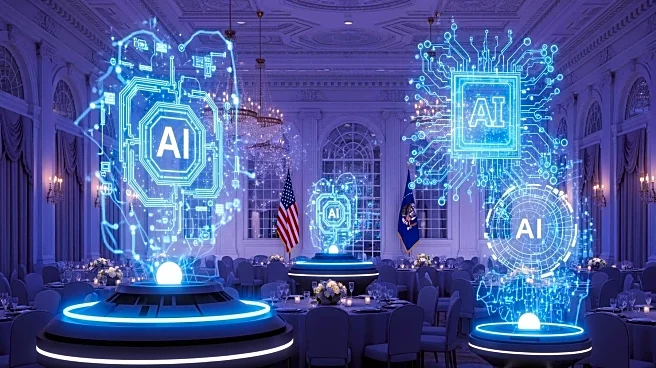What's Happening?
President Donald Trump hosted a dinner at the White House for nearly 130 donors and representatives from major companies to acknowledge their contributions to a new ballroom project. The ballroom, estimated to cost $250 million, is a significant renovation
during Trump's second term. The event featured representatives from companies like Amazon, Apple, and Google, as well as notable figures such as oil billionaire Harold Hamm and Blackstone CEO Steve Schwarzman. The ballroom, planned to be located in the East Wing, will feature bulletproof glass and accommodate up to 999 people. Trump emphasized the importance of the White House and the need for such a venue to host large events without the need for temporary structures.
Why It's Important?
The construction of a new ballroom at the White House represents a significant investment in infrastructure and reflects President Trump's focus on enhancing the venue's capacity for large-scale events. This development could impact how future administrations host diplomatic and political gatherings, potentially increasing the White House's role as a central hub for major events. The involvement of high-profile donors and companies underscores the intersection of politics and business, highlighting the influence of corporate contributions in political projects. The ballroom's construction may also set a precedent for future renovations and expansions at the White House.
What's Next?
The ballroom project awaits approval from the National Capital Planning Commission and the Commission of Fine Arts, although Trump claims no zoning requirements apply to him as president. The completion of the ballroom could lead to more frequent and larger events at the White House, potentially altering the dynamics of political and diplomatic engagements. Stakeholders, including political leaders and business representatives, may continue to engage with the administration to influence the project's progress and future use.
Beyond the Headlines
The ballroom's construction raises questions about the ethical implications of using donor contributions for government property enhancements. It also highlights the cultural significance of the White House as a symbol of American politics and history, with renovations potentially affecting its traditional aesthetic. The project may trigger discussions on the balance between preserving historical integrity and modernizing facilities to meet contemporary needs.















